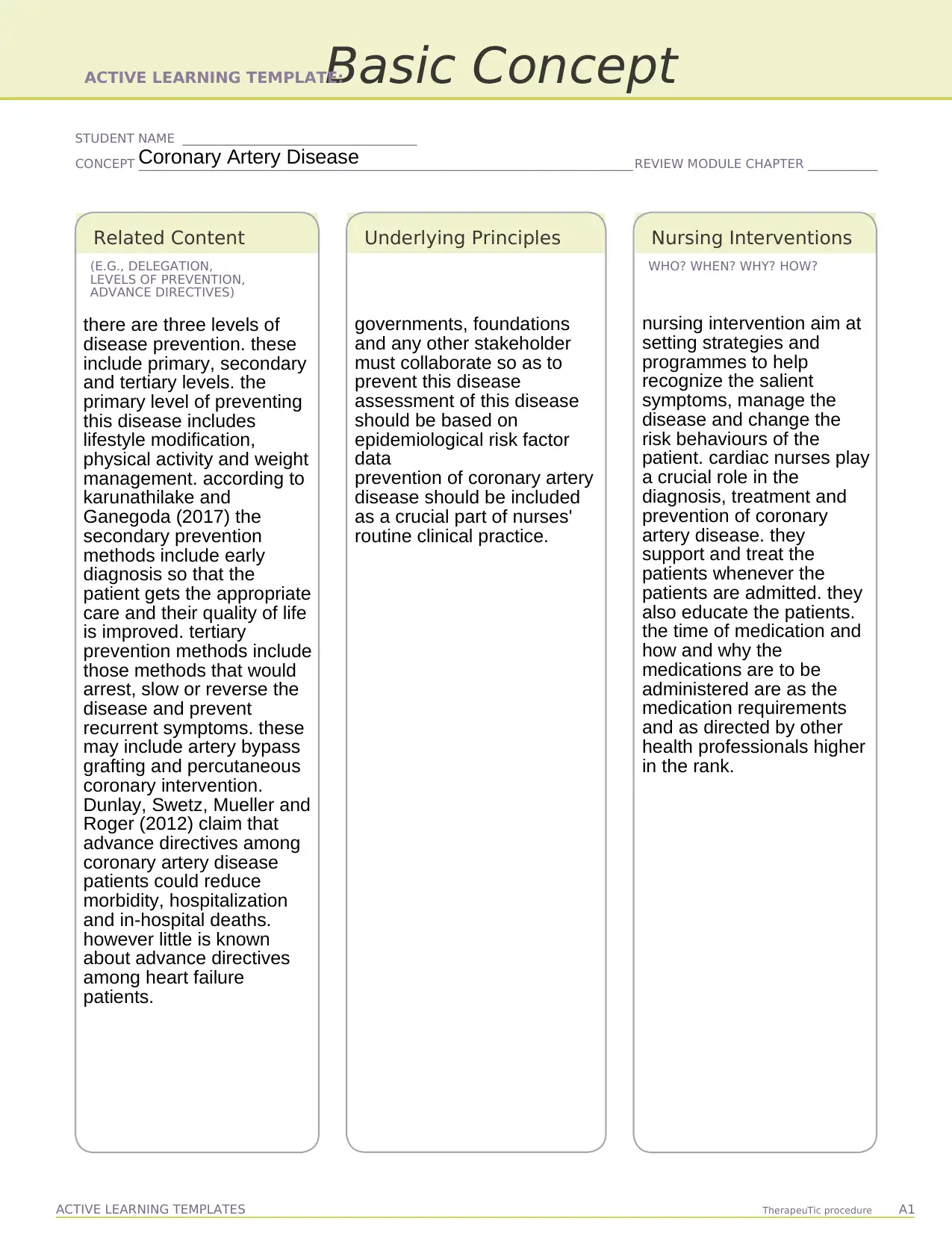Ischemic Cardiomyopathy and Coronary Artery Disease: A Review
VerifiedAdded on 2022/10/04
|1
|322
|47
Homework Assignment
AI Summary
This assignment delves into Coronary Artery Disease (CAD) and Ischemic Cardiomyopathy, presenting a student's work on active learning templates. The assignment covers various aspects of CAD, including the three levels of disease prevention (primary, secondary, and tertiary), nursing interventions, and health promotion strategies. It examines the disorder/disease process, pathophysiology, risk factors (such as male gender, advanced age, and family history), and expected findings. The student's work also explores ischemic cardiomyopathy, its causes, signs and symptoms, and diagnostic methods. The document emphasizes the importance of lifestyle modifications, early diagnosis, and patient education in managing and preventing CAD, highlighting the crucial role of cardiac nurses in patient care and the significance of advance directives. This comprehensive analysis provides a detailed overview of CAD and related conditions, offering valuable insights for healthcare professionals and students alike.







![[object Object]](/_next/static/media/star-bottom.7253800d.svg)